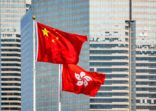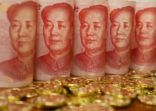Paul McSheaffrey, KPMG
Industry assets under management (AUM) increased 25% year-on-year to HK$11.3trn ($1.45trn) in 2020, up from HK$9.1trn in 2019, according to KPMG’s Hong Kong Private Wealth Management Report 2021.
The international consulting firm believes that with supportive policies in the Greater Bay Area (GBA), Hong Kong will continue to be an attractive PWM hub for wealthy clients from mainland China.
“[Beijing’s] GBA policy very clearly places Hong Kong as the international asset and wealth management centre for China. That leaves Hong Kong as an offshore centre on the doorstep of China,” Paul McSheaffrey, partner, head of banking and capital markets of Hong Kong at KPMG, told FSA.
Hong Kong has a different legal system and a different financial system in terms of how its operates, according to McSheaffrey, and these factors have already given Hong Kong the ability to be an offshore wealth centre and attract money, he said.
China flows
“Another thing that is very important for the industry to understand is where the wealth is being created. And that’s largely happening in China, whether it’s in GBA or Yangtze River Delta or Bohai. People then turn to Hong Kong wealth to have their wealth managed,” McSheaffrey said.
Net fund inflows to the Hong Kong PWM industry amounted to HK$656bn in 2020. Surveyed PWMA member firms said that on average, 41% of their AUM is currently sourced from mainland China, up from 40% in 2020, indicating mainland China inflows may have helped boost overall AUM, according to the KPMG report.
The growth in AUM sourced by private banks’ mainland China teams has been quite significant, and a very large percentage of their current books are driven by mainland China clients, Isabel Zisselsberger, head of strategy and performance of financial services at KPMG, told FSA.
“(Mainland clients) are clearly a top priority for the private banks here in Hong Kong. They focus on hiring a lot of relationship managers that are native mainland Chinese who can work well with the client base,” Zisselsberger said.
“They are also investing in their digital propositions so that they can offer clients messaging functionality, the ability to interact with WeChat, and all the things that a mainland client would expect,” she added.
Talent shortage
McSheaffrey said that one of the constraints that the industry is facing is the shortage in supply of talents. Although the supply of PWM talent has grown at a slightly faster rate in previous years, relationship managers, product specialists, and IT and digital specialists are key roles where gaps remain.
Focusing on creating attractive remuneration packages and resolving administrative inefficiencies, as well as on providing opportunities for personal development, will be essential to attract and retain top talent.
“If I were the (SAR)government, I would focus on the structural issues. And by that, I don’t mean short-term issues, but focusing on how do we retrain, how do we attract and retain people over five or 10 years. How can we ensure that people continue coming to the universities and to acquire the skills that are all going to need in the future,” McSheaffrey said.
Aside from attracting talents to Hong Kong, the challenging regulatory environment remains one of the biggest concerns for Hong Kong’s PWM industry, with “know your customer” and anti-money laundering rules, sales practices and suitability being key pain points for both PWM institutions and their clients, according to KPMG.

















